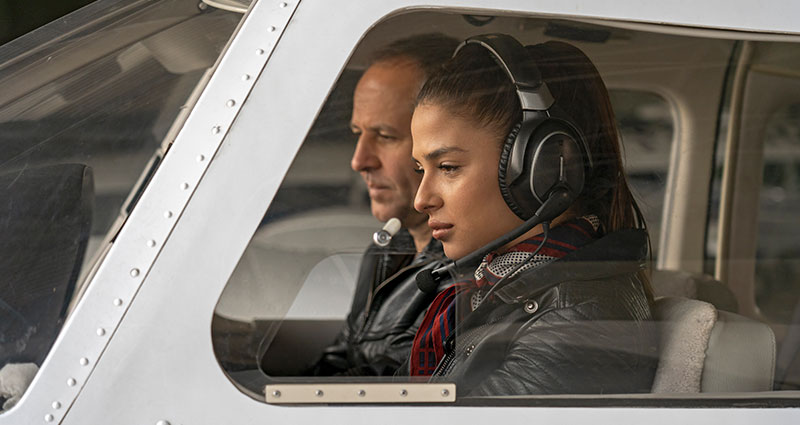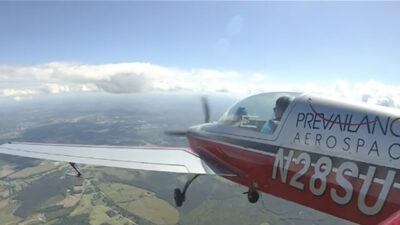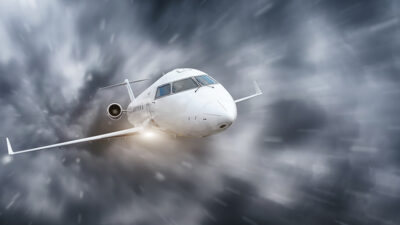Redefining Pilot Skills?!

How does a pilot truly get better? What drives us to get better or what is the event that triggers the awareness of our potential deficiencies?
The impetus and subsequent path to improvement comes in many different forms. We practice in different ways. We test our skills and our aircraft in different ways. We pass check rides and maybe reinforce lessons of past. However, when we fail or fall short, the path to improvement has begun.
Failure as the Foundation of Success
Failing is often better than succeeding in helping us identify shortfalls and moving forward better than we started. But residing in the comfort of our existing skill sets and status quo can lead us to hesitancy in intentionally experiencing failure and growth. In the end, how much better do we become? How is better quantified—both individually and collectively?
The reality is that the methods for assessment vary, yet life-and-death situations force introspection upon each of us. Sometimes it is a death in the family that changes our perspective, sometimes an illness or sometimes it is an aviation accident that makes us truly look in the mirror and assess who we are… and how to be just a little bit better.
Due to recent and closely spaced yet separate aviation accidents where two phenomenal pilots did not make it out of potentially survivable situations, I was forced to reflect. During this period of reflection, I began to view piloting skills through a different lens. It is the age-old question of “How do bad things happen to such good pilots?”
3 Key Factors in Aviation Safety
I believe safety comes down to a relationship between three major contributors: 1) The experience of the pilot, 2) the capability of the airframe and 3) the altitude. These interdependent factors rely on each other and support each other in the same way that the legs of a triangle are perfectly balanced. If one of them is reduced, the impact to the others quickly changes.

Figure 1 The three major contributors that affect the outcome of an unanticipated aviation accident and combine to form the redefinition of pilot skills.
For example, when a pilot has plenty of altitude, that pilot has the luxury of time. Time to make bad decisions, time to make good decisions and time to eventually determine a solution that could save a life. With less altitude, both the experience of the pilot and the capability of the airframe play a more significant role in how to resolve an unplanned and potentially catastrophic event airborne.
Redefining piloting skills supports a better understanding of all three contributors and how each manifests itself in that pilot’s overarching capability. In our example, plenty of altitude provides more time to utilize the full envelope and capability of the airframe along with the experience of the pilot to identify and remedy a developing upset condition.1
Training and the Triangle
In training, pilots can experiment, test and learn with sufficient altitude buffers and direct oversight of professional flight instructors. I do not mean test as in “I’m going to become a test pilot,” but more from the perspective of testing a pilot’s capability in various regimes of flight:
- Higher angles of bank than usual
- Higher pitch attitudes than usual
- A little more yaw than usual
- G forces in excess of those normally experienced
Acknowledging that there is room for improvement is the first step in approaching the triangle. The next step comes with direct action and subsequently wraps up with maintenance of the improved state. This aligns with the Stages of Change Model2 and supports pilots working to improve each leg of the triangle. These opportunities to expand a pilot’s personal operating envelope through training improve one side of the triangle directly (1 – pilot skills) and another side indirectly (2 – understanding airframe capability).
Better than exploring an operating envelope independently is hiring a certified flight instructor (CFI) to support the cause. This does not mean the youngest CFI at the local flight school. However, it might mean a more senior member of that local flight school team or one who acts as a CFI full time after decades of instruction. It is not the quantity of time that makes any pilot or CFI better; it is the depth of knowledge and varied experience. A CFI with a robust resume of experiences, aircraft types and operating environments could make all the difference in making you better.
Enhancing Your Skills as a Pilot: A Never-Ending Objective
As I sat in my aircraft ready to launch from an aircraft carrier years ago, I witnessed a great friend and gifted aviator deal unsuccessfully with an insurmountably small triangle of altitude, skill and aircraft capability.
I’m not sure what additional efforts would have changed the outcome that day. But as pilots, we must continually arm ourselves and hone the skills required to achieve the best possible outcome when fate deals us an unexpected hand. Our passengers and crewmembers have placed the highest levels of trust in our ability to resolve issues of our own doing or circumstances placed in our flight path.
Redefining pilot skills is not about reading a book, executing one simulator session or one flight. It is an ongoing endeavor to strive for excellence. It is all about looking at the three major contributors that lead to accidents, determining where a vulnerability exists and doing everything in your power to fix it.
Upgrade a system, invest in training, fly only in IFR and/or experience a new airframe that just might expand and lead to a better understanding of aerodynamics. Be bold and embrace the paradigm shift—it will pay huge dividends in the end.
Resources
1 FAA Advisory Circular 120-111 Upset Prevention & Recovery Training. Retrieved 8/28/21 from https://www.faa.gov/documentLibrary/media/Advisory_Circular/AC_120-111_CHG_1.pdf
2 Scott, E. (2021, February 16). How to Be a Better Person. VeryWellMind. https://www.verywellmind.com/how-to-be-a-better-person-4167628

Prevailance Aerospace is a UPRT provider that has been working with corporate, government, and general aviation pilots to improve safety in the aviation industry. Prevailance Aerospace uses Extra 300 Series Aircraft for training and our pilots are experienced aviation professionals from various military and general aviation backgrounds. We know that successful aviation endeavors are accomplished through an uncompromising commitment to safety, impeccable professionalism, tremendous attention to detail, and constant improvement.
https://prevailanceaerospace.com/
© 2024 Prevailance Aerospace. All Rights Reserved.
Next ArticleRelated Posts

Three Considerations That Set Pilots Up for Success
Constantly reviewing aviation accidents and incidents is challenging. As an instructor, it is not only the injuries and fatalities that make it hard, but the sheer magnitude of avoidable aspects of each incident. These safety reports prove that every Pilot in Command (PIC) is accountable for what transpires.

Understanding the Challenge of Turbulence-Related Injuries in Business Aviation
The challenge of managing air turbulence in business and private aviation is becoming increasingly evident due to the growing number of turbulence-related incidents affecting aircraft operators across the industry.

